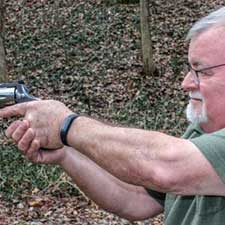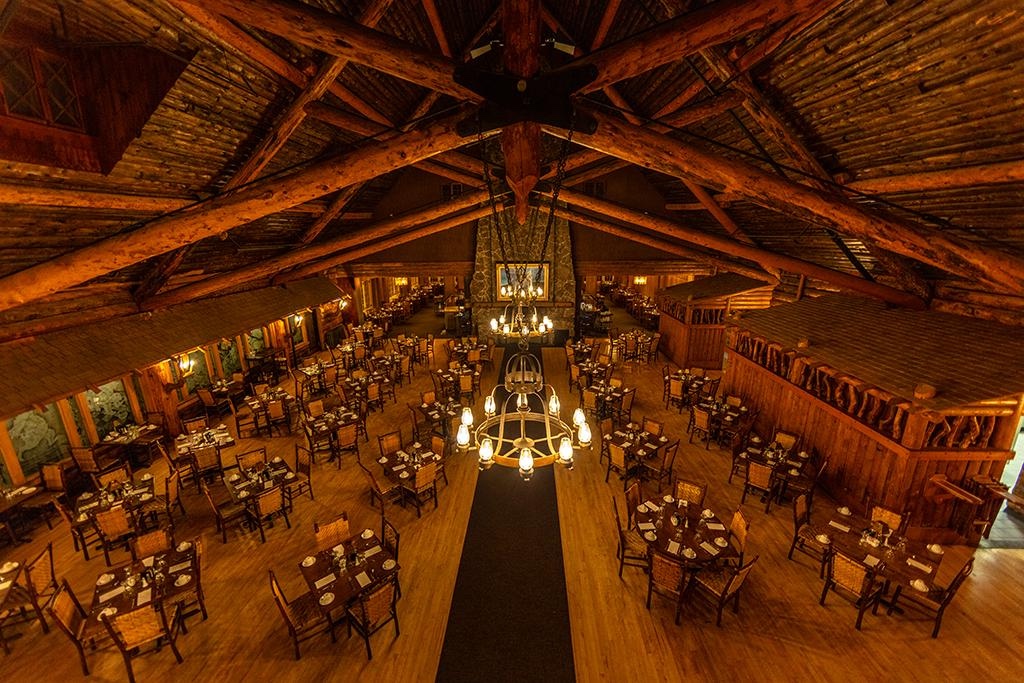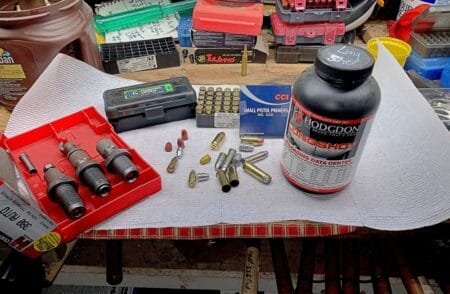
In our Reloading 101 series, we have covered quite a few topics, from the required equipment to the benefits of using a progressive press and loading the popular .223 cartridge. It’s time we talked about an area of reloading that forms a sort of sub-set all on its own: reloading for handguns. Many new reloaders have asked me before: Is it the same as loading for rifles?
Nope. It’s Not The Same
The basic process remains unchanged, but handgun loading requires a few tweaks that bottleneck-cased rifle cartridges don’t. So, how is it different?
Before we answer that, let’s make one assumption that concerns bullets. When I refer to loading for rifles, I’m talking about loading jacketed bullets, not lead. Suffice it to say that if you load lead bullets in a rifle cartridge (.45-70, for example), you would probably treat the case as you would a case for a revolver. Lead rifle bullets are an exception when loading for rifles. So, let’s assume we’re talking about loading JHP, FMJ, or JSP bullets in a typical rifle bottleneck caliber such as .223, .308, or similar chambering when I mention loading for rifles.
The main difference between reloading for handguns and reloading most rifle calibers is case mouth expansion, which handgun cases require. By way of explanation, here’s the run-down of typical rifle reloading steps… let’s review them:
- Resize and decap the case.
- Re-prime the case and drop the powder charge.
- Seat and crimp the bullet.
How you do these steps may vary a bit. You might seat the bullet at one station and crimp at another, but the process is the same.
Now, here’s the drill when reloading for handguns:
- Resize and decap the case.
- Re-prime the case.
- Expand the case mouth and drop the powder charge.
- Seat and crimp the bullet.
As in the rifle example above, you might perform operations like seating and crimping separately. On the other hand, you might have the option of combining steps. Typically, most ordinary rifle die sets consist of just two dies — a resizer/decapper and a bullet seater/crimper.
Handgun sets will have an extra case mouth expansion die, either stand-alone or built into the powder measure die. Many handgun presses (turret and progressive) are set up so that the powder drop die is attached to the case mouth expansion die. That saves a station on your press. Single-stage presses usually use all four of the dies, since the powder measure is typically stand-alone and not attached to the expansion die. Therefore, case mouth expansion must be carried out as a separate step.
I used my Dillon Precision XL750 press to load .223. For this article, I’ll use my ancient Lee turret press. This press once was autoindexing, but the poor old thing is tired, so I help it spin its tool head.
Live Inventory Price Checker
Loading For Semi-Autos
First, start with clean (preferably tumbled) brass. We’ll use the .45ACP as an example.
Station one: resize and decap the case. If you are not using a carbide sizing die (if not, you need one of those — no case lube is needed), lube the case. Run the case up into the die to resize it and kick the old primer out. Re-prime the case on the downstroke.
Station two: Run the case up into the mouth-expanding, powder-dispensing die. This will flare the case mouth and deposit the powder charge into the case.
Station three: Place a bullet in the case mouth and raise the case up into the seating (and/or crimping) die.
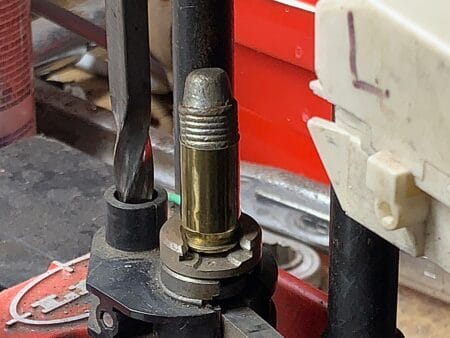

Station four: Crimp the bullet. (This step is optional. If you seat and crimp the bullet at the same time on station three, you will not need station four).
That’s it. It’s pretty straightforward, and easily done once everything is set up properly.
Here are a couple of quick notes concerning handgun dies #1 and #4. You really need a carbide sizing die (#1) if you don’t already have one. You will save a lot of time with one of those!
Also, a separate taper-crimp die (#4) is handy when loading semi-auto rounds. It makes the crimp very adjustable. and allows fine-tuning without messing up the bullet’s seating depth.
Loading For Revolvers
What about wheelguns? Pretty much everything is the same except for crimping. For roll-crimping revolver cartridges, the #3 seating die should work well. You can’t see the top of my turret, but there are four dies installed for the .45ACP. If I were loading a .357 Magnum, there would be only three dies. Most semi-auto cartridge die sets nowadays will include a taper-crimp die, but revolvers don’t need that. A simple “die-#-3” roll crimp will work 99% of the time.
You will need to, however, flare the case mouth for both types of handgun loading.
Why Flare The Case Mouth?
I shoot a lot of cast lead bullets. As a matter of fact, I’ve been making my own bullets for almost as long as I’ve been reloading. It cuts the cost down to almost nothing per bullet if you can scrounge wheel weights from a tire shop.
(This is not an article on bullet casting, but I will include one tip: tire shops are phasing out lead wheel weights. Do not try to use iron, aluminum, or zinc — no bueno! Lead wheel weights have some tin and antimony in them. Both of those elements make for good cast bullets, more than just plain lead. Those other three metals will not work, trust me!)
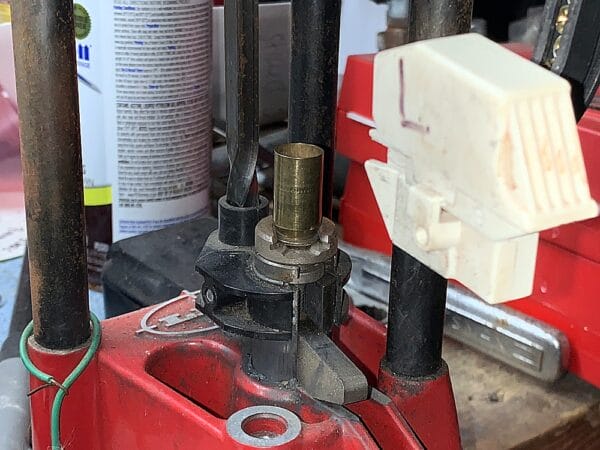



There is a problem with lead bullets that you do not have with those of the jacketed persuasion. Unless you expand the case mouth just enough that the lead bullet will sit on its own there, you will shave lead from the bullet’s base as it seats. Another possible problem is that the case mouth may crumple if it’s not expanded. It’s better to flare it just enough that the bullet will start and will sit in the case mouth without help.
Crimping: Necessary?
Now we get to the actual crimp types: roll and taper. But first, why do we even need to crimp the bullet? Can’t the case neck tension hold it?
Nope. Not under recoil. One of the causes of handgun malfunction is bullets that “jump their crimp,” meaning bullets that, under recoil, will creep forward against their crimp. If this happens enough, the shooting stops. A semi-auto can malfunction if the bullets are too far forward — cartridges may not seat in the chamber or will be unable to be fed from the magazine. The same happens to a revolver, a few cartridges with bad crimps can persuade it to quit working. I’ve seen bullets protruding far enough to stop the cylinder’s rotation. Crimp is vital!
But can a lack of crimp do more than just “tie up” a gun? You betcha!
Just as bullets that come forward under recoil can jam a gun or otherwise cause it to malfunction, bullets that are pushed back into their cases due to inadequate crimp can have much more drastic effects.
Ka-BOOM!
I had a 1911 once, many moons ago, that came apart in my hand in dramatic fashion. Why? Cartridges in the magazine were not crimped to spec — really odd for factory ammo — and bullets were pushed back deeper into their cases due to the recoil bouncing the bullets off the front of the magazine with each shot. Evidently, one of the rounds in the mag had been pushed so deep that the pressure it generated could not be contained by the pistol, so… ka-BOOM!
I was blessed not to get hurt, but the gun had to make a trip to the mothership for repair. I figured out what had happened when I examined the few remaining cartridges in the magazine and saw that a couple more had bullets that were pushed pretty far back into their cases. The manufacturer made it right, by the way, even though it wasn’t their fault.
It taught me a lesson on ammo I reloaded… ALWAYS crimp those bullets!
Crimping: Roll or Taper… Which Is Right?
Here’s the short answer. For cartridges that headspace (see below) on the case mouth, like semi-auto rounds, you will taper crimp. For cartridges that headspace on the case rim, a roll crimp is right. Why?
Taper Crimp
Taper-crimped cartridges will butt up against the chamber ledge with the case mouth. That will stop the case’s movement into the chamber and give it something to rest against (which, coincidentally, is the definition of headspace). The extractor clips over the case rim, and the case is held tight against the chamber’s ledge. Most magazine-fed firearms use rimless cartridges and will headspace on the case mouth (straight-wall pistol cartridges) or case shoulder (bottleneck cartridges in rifles and machine guns). One exception I can think of is the British .303. That rimmed cartridge was used in machine guns galore… I still don’t know how they got it to feed!
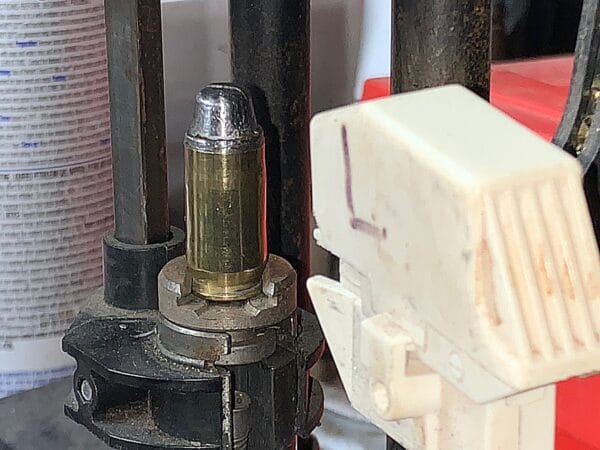

Taper-crimping is usually performed as a separate step with a taper-crimp die. You can use your bullet-seating die to taper-crimp, but you tend to have more control over the crimp with a separate die.
Roll Crimp
Revolver cartridges’ forward movement into the chamber is stopped by their rim. The rim holds the cartridge firmly in the chamber and that’s what allows the firing pin to ignite the primer. Therefore, the revolver’s case mouth is a slacker where doing actual work is concerned, unlike their rimless semi-auto cousins. Since many revolver cartridges can be of the “elephant-stopper” variety, a very firm roll crimp on the bullet is needed to keep the bullet in its case until it’s time to leave the barrel.
One “oops” to watch for when roll-crimping is overdoing it. If you run too much of the case into the seating/crimping die or have that die adjusted too low, you can put enough of a bulge on the case that prevents it from entering the revolver’s chamber.
What To Look For When Reloading For Handguns
There are a couple of areas to double-check when reloading for handguns. The first applies to any reloading you do for any type of gun. It concerns the primer. Is the primer seated fully?
If not, you could risk a slam-fire in a semi-auto (surprise, surprise!) or a misfire. If you are shooting a double-action revolver or a semi-auto that has double-strike capability, simply pull the trigger again. Sometimes, the primer isn’t seated deep enough to be fired the first time and a second try finally gets it going. The revolver will rotate the cylinder and let a new cartridge be fired. The double-strike semi-auto will give that same lazy primer a second “whack” if it wasn’t seated deep enough to fire the first time sometimes a second go sets it off. I’ve had that happen several times.
The second thing to look over and double-check when loading for handguns is the crimp. (I know, I’ve spent tons of words on crimping here, but it is important). Your 9mm, .40 S&W, .380, and .45 ACP loads will all be taper-crimped so there isn’t much to see where that is concerned unless a dial caliper is brought into action. A revolver crimp, however, might be a different story as we discussed above. It is easily spotted if it isn’t correct.
The “Crimp Test”
So, how do you determine if your loaded rounds are crimped enough? Perform the “Crimp Test” (that’s what I call it, anyway). No equipment is needed. Simply grab a cartridge and try to push the bullet back into the case against your reloading or other bench. If the bullet moves, you go back to the drawing board and re-crimp.
If there’s no movement, good! Shoot a magazine’s worth, checking the remaining rounds in the mag after each shot. The bullets should show no movement, fore OR aft. If your Mk I Eyeball can’t tell the difference, grab a caliper as I just mentioned. A couple of thousandths is not a big deal, but if you start noticing more movement than that, you need to re-examine your taper crimp.
A revolver bullet shouldn’t creep under pressure, either. The roll crimp gives you a more visible sign of bullet movement since the case mouth is physically turned into the crimp groove or cannelure of the bullet.
You don’t need to check every loaded round… just pick a few at random.
Reloading for Handguns, In The End…
Reloading for handguns is easy. Remember crimping and case mouth expansion are mandatory steps for handgun rounds. I know that rifle cartridges are crimped, too. It’s just that with handguns, your crimp will vary depending on the type of cartridge you’re loading. Having the proper equipment on hand in terms of dies, calipers, etc. helps as well.
Make sure your primers are seated to just below flush and your bullets are crimped properly. If you do these things, you should be good to go. Loading for handguns is one fun way to crank out many practice, hunting, or competition rounds. It will also most probably allow you to save money while doing so. What’s not to like?
About Mike Hardesty
With experience spanning over 45 years, Mike Hardesty has long enjoyed shooting and reloading. An inveterate reloader, he casts bullets and reloads for a diverse array of firearms, each handled with long-practiced precision. Living in rural Indiana, his homestead boasts a personal 100-yard range where he shares his love for guns to his four sons, their wives, and eleven grandchildren. As a recognized author, his writings have been featured in notable platforms like Sniper Country, Bear Creek Arsenal Blog, Pew Pew Tactical, TTAG, Dillon Precision’s Blue Press, and Gun Made, revealing his ongoing passion for firearms at the age of 72.
